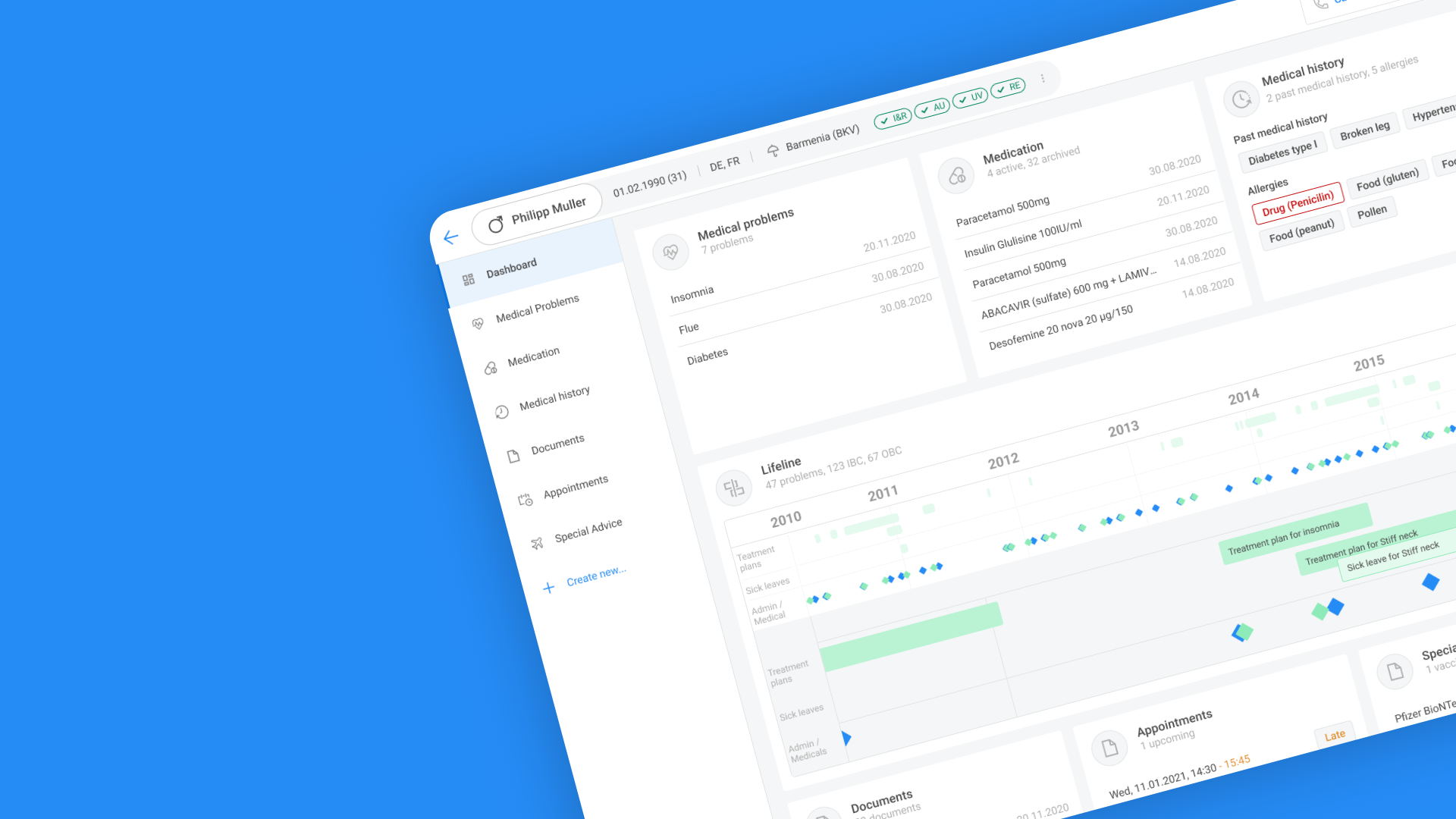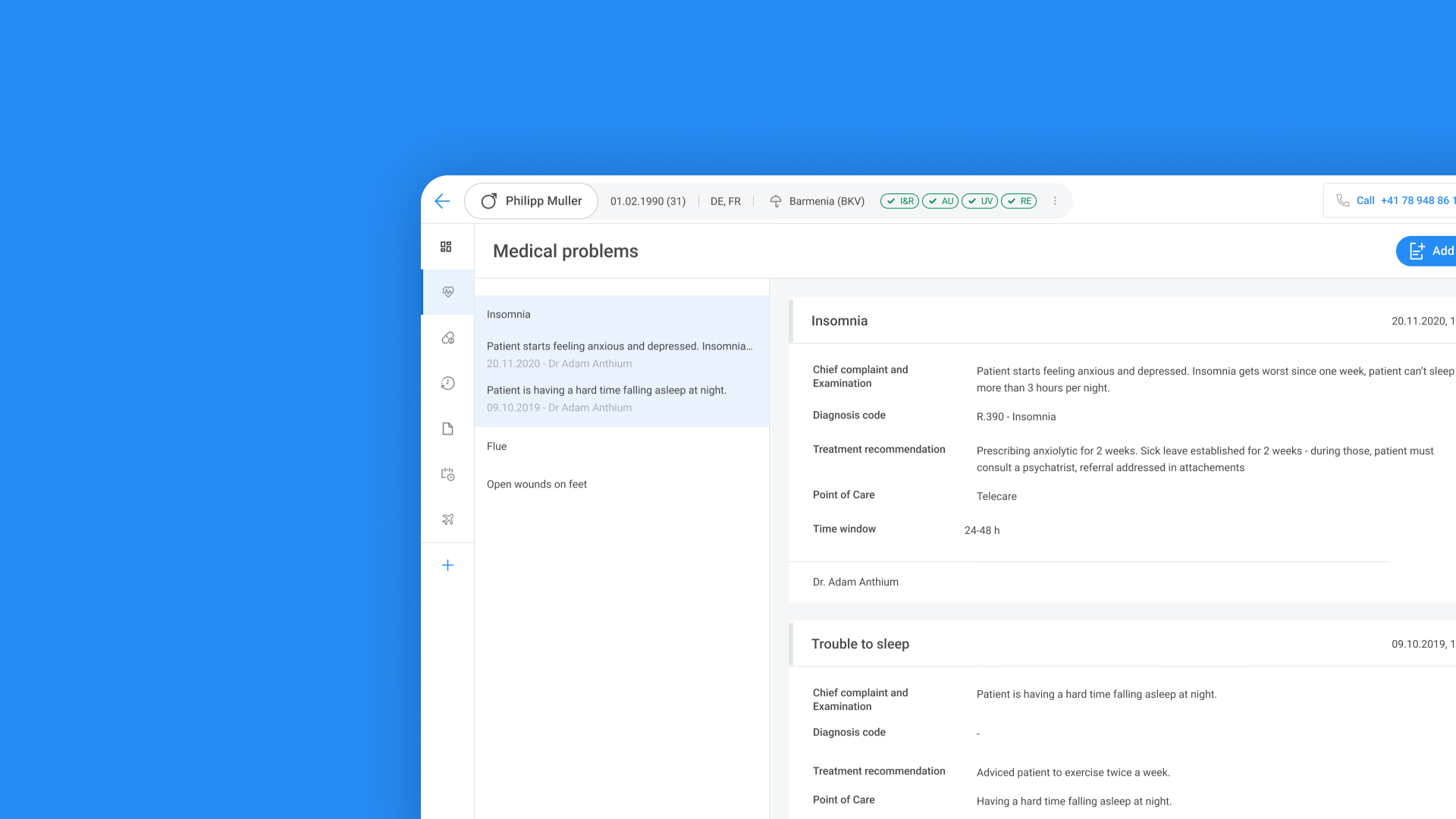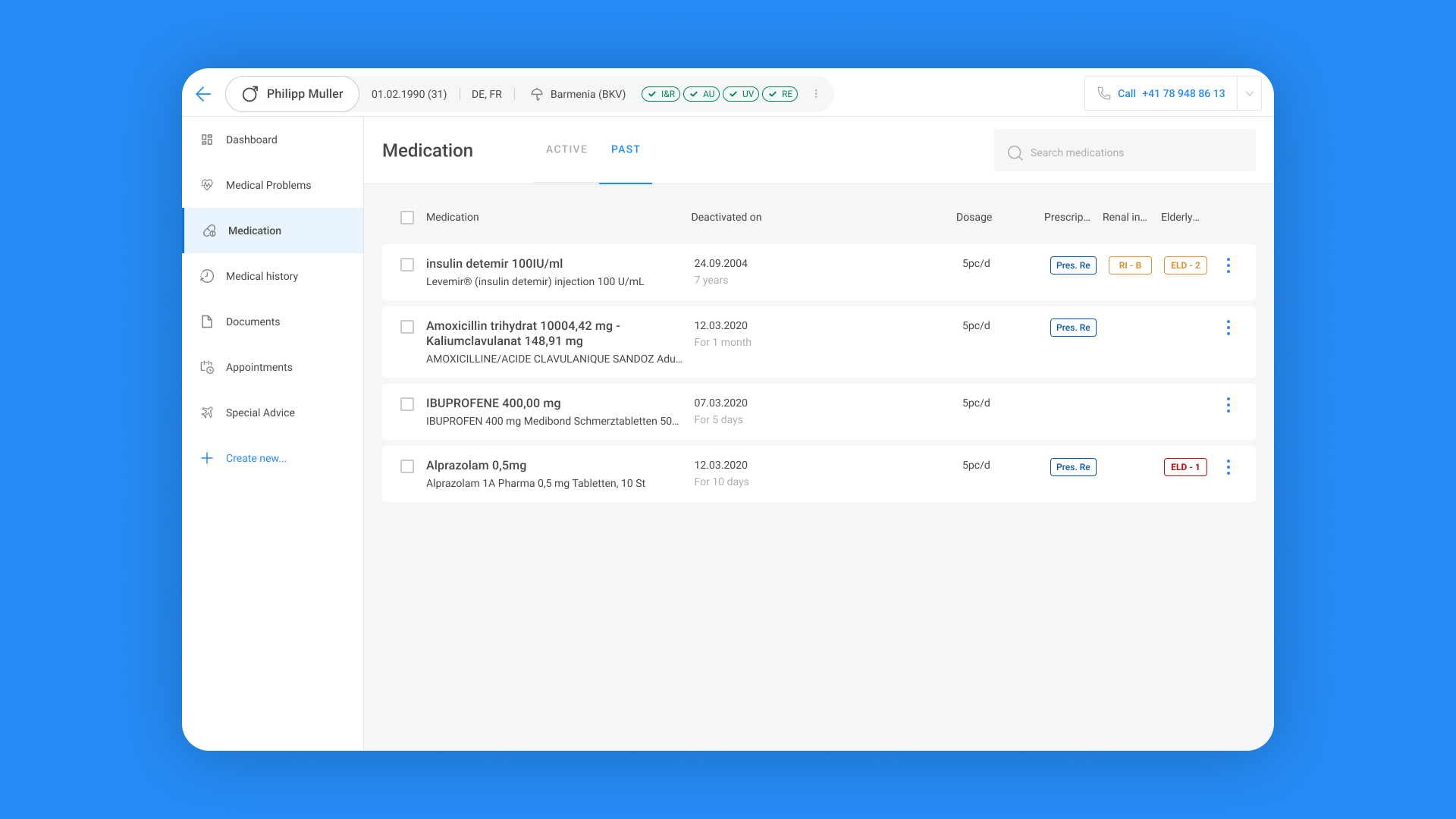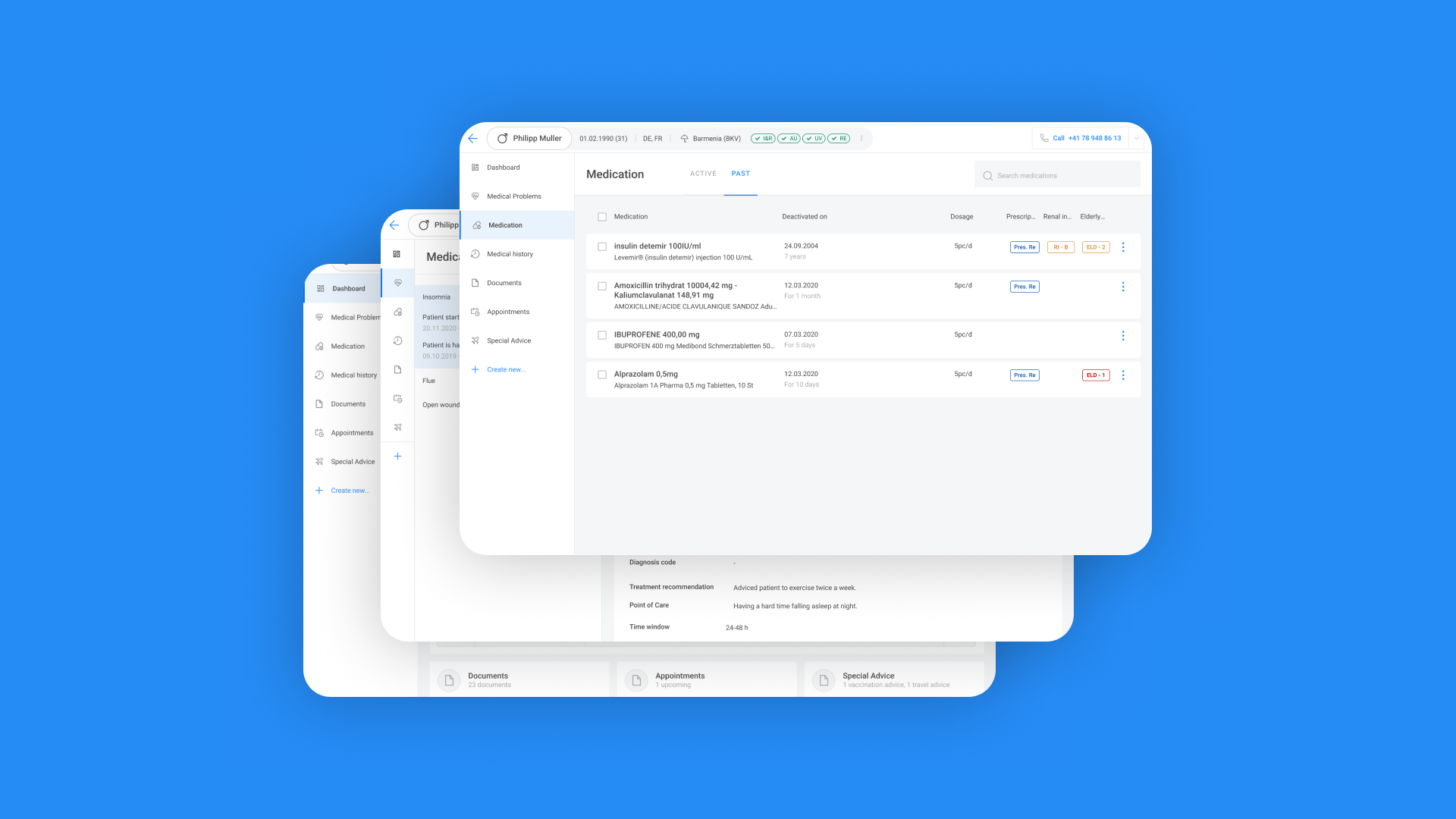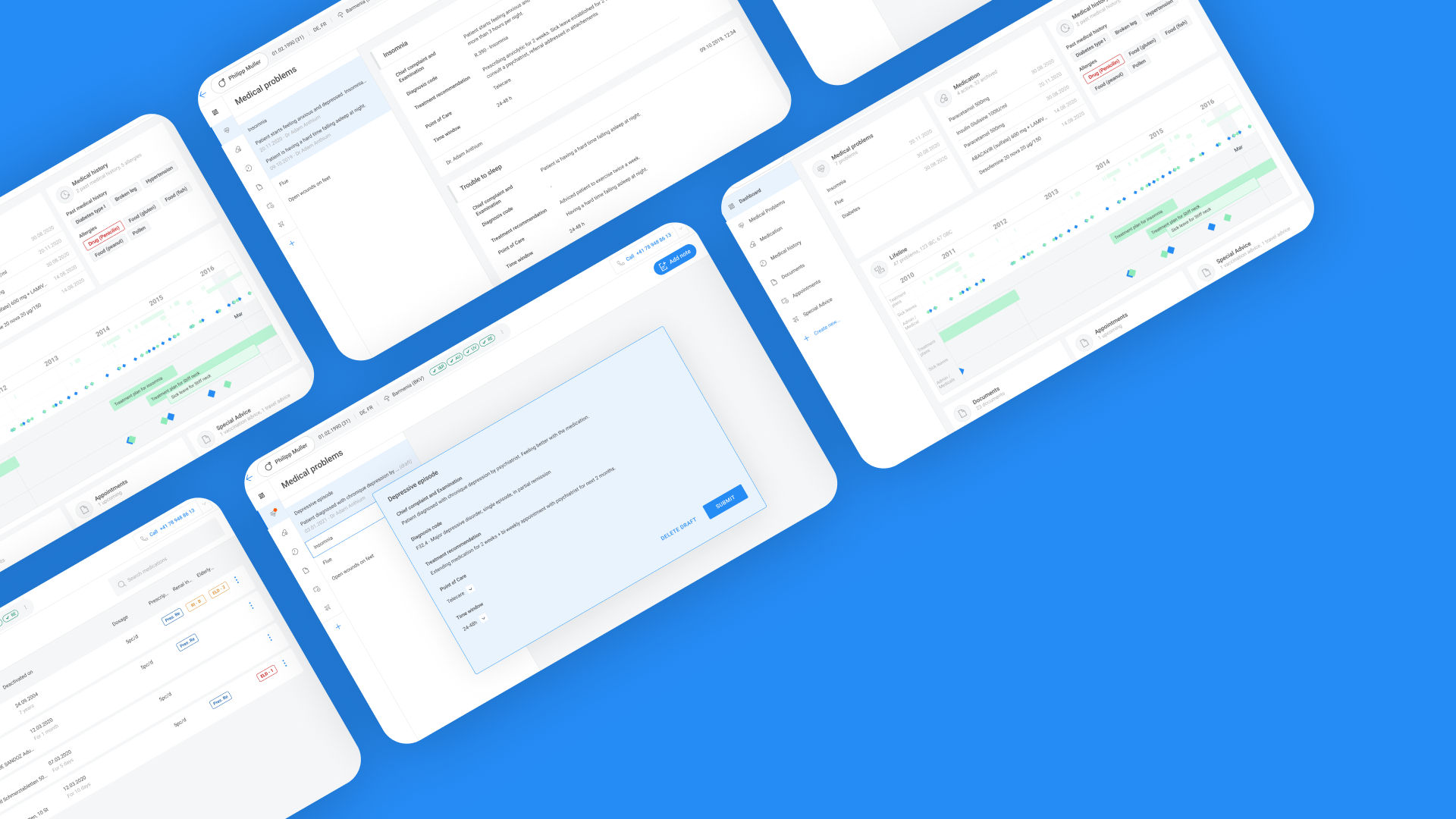Designing a Patient Management System for a teleconsultation company
Telecare companies are often constrained by outdated legacy systems, burdened with cumbersome workflows and a patchwork of features added along time without any structure. As a designer, my main challenge was to simplify and modernize an aging Patient Management System (PMS), and keep the platform consistant while accounting for regional healthcare requirement.
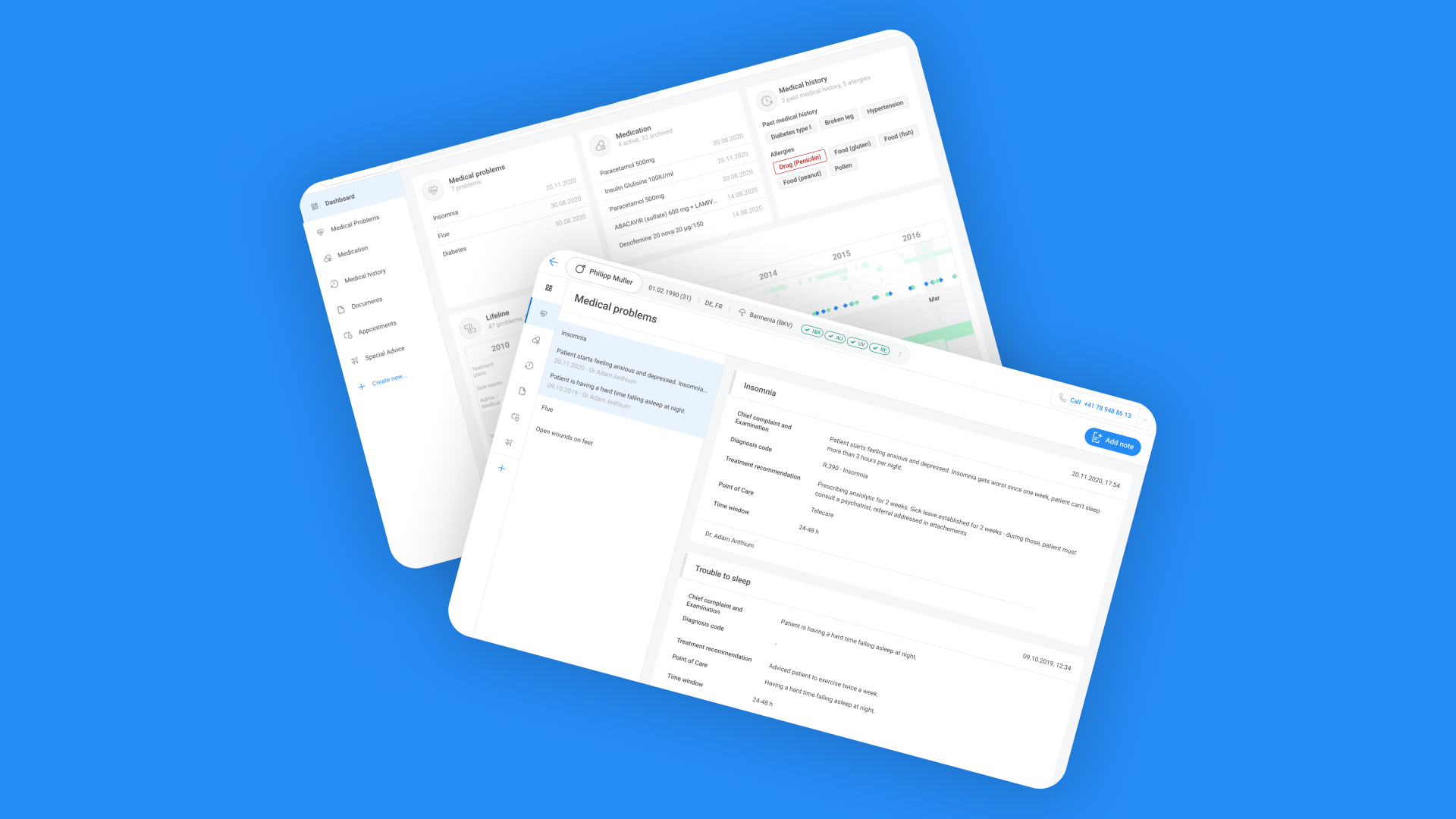
Hub concept for a better overview
For the patient folder, we first decided to introduce a Hub and Spoke pattern, to catter for clinicians' need to stay free in the consultation flow and also to optimize the screen real-estate.
Initially, each widget on the dashboard was leading to it's dedicated content, offering users the ability to focus on individual task. Yet, the need of a navigation rised quickly, to allow clinicians to jump from one section to another without comming back everytime to the dashboard.
One key learning here was to never take for granted the first design intuitions, and always challenge assumptions against end-users.
Inline editing, autosave and draft
We initially designed all forms within modal windows, ensuring technical feasibility and matching with users’ current system. Even if seen as intrusive (mostly because of their miss usage in many systems), modal windows present the benefit to focus user's attention on the ongoing task, and anhihilate the risk of misclick and data loss, which can be critical in medical envoronnement.
Even though this first assumption was legit, it occurred that clinician tend to conduct their sessions in a fuzzy way, trying to fill out all the data as spoken by the patient, needing to jump from one form to another. We then introduced the draft notion with an autosave, allowing users to navigate between the document, and even submit the different forms after the call was ended.
Search, add and edit medication
To leverage the maximum out of the medication database, we spent time investigating in detail what information was available. It was a requirements from clinicians to be able to prescribe either a specific brand or simply the active substance, as by law in Germany. Catering for such a huge amount of results and displaying critical information for each result was a challenging. We selected a table to display medication, allowing users to quickly scan and manipulate ongoing medication.
